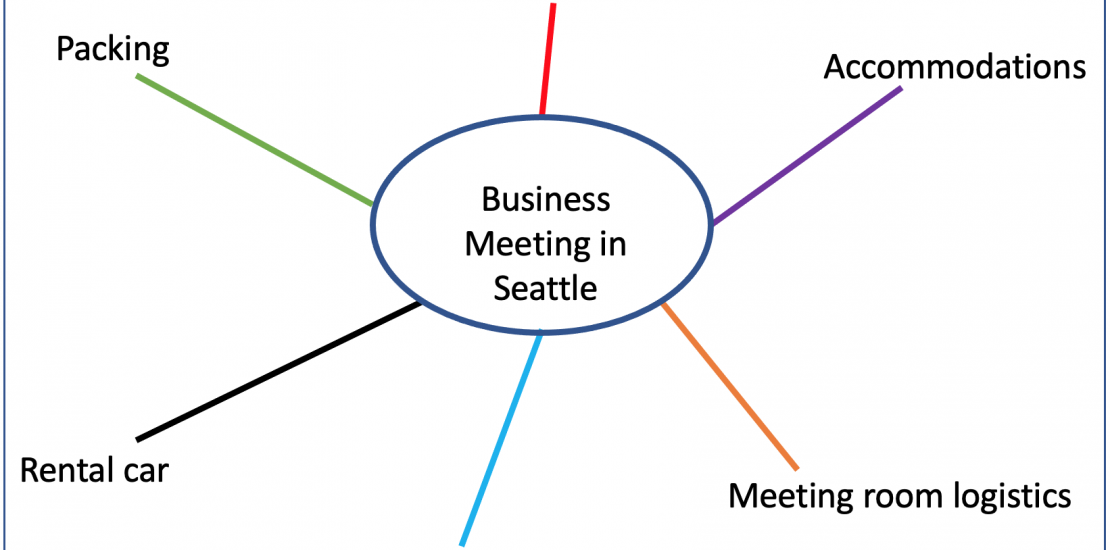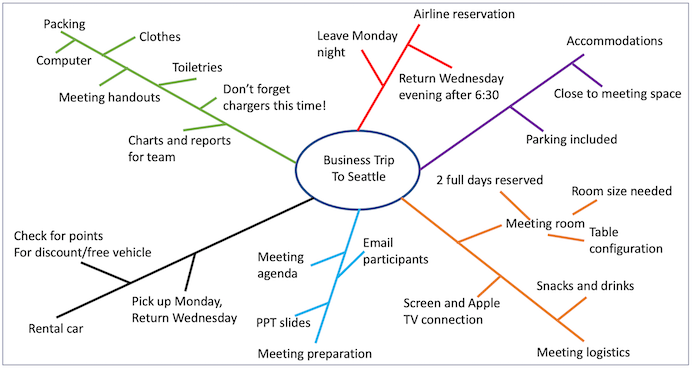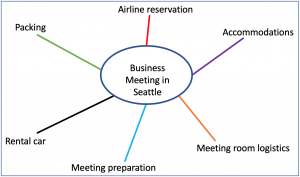- June 22, 2021
- Posted by: andreag
- Category: InnovationInternal ImprovementProject PlanningSystems-Process-Improvement

Recently, we introduced a small series of posts titled “Facilitator Basics”. The posts include the tools and techniques that we have utilized time and again over nearly 40 years of consulting, i.e., those that have benefitted our clients the most both inside and outside of the facilitated PGS session. Our first post covered what is probably the most well-known of these miscellaneous tools: “What I Feel Like Saying”. It is the tool most able to diffuse a sticky situation in a meeting or simply get a team focused and ready to get to work.
This post covers an equally popular tool and one that can be used by a group in a meeting or by an individual who needs to do some brainstorming or organizing. The tool is Mindmapping. A mindmap is a fabulous tool with multiple uses – creating a list, taking notes, brainstorming ideas, problem-solving, even beginning to organize a multi-faceted project.
Mindmapping is creative process that records ideas in a simple connected pattern. To start, put your central theme, project or idea in the center of a piece of paper or flip chart sheet and circle it. As major categories of work come to mind, draw them as the main branches off the center circle. So, for example, let’s say your project is organizing a Business Meeting in Seattle. Your initial diagram might look something like this:
Tip: Try using a different color for each branch. It helps stimulate your thinking and keeps the categories distinct.
Once the major categories are mindmapped, go back and add details as sub-branches using the appropriate color for that branch. You don’t have to move one branch at a time, trying to complete all of one section. Mindmapping is not linear like an outline, allowing you to record your ideas in a random order as they come to mind. Of course, if you think of a detail while drawing the major categories, it is certainly OK to add it in at that time.
Here’s our finished mindmap for Seattle
 Some advantages to mindmapping in place of using an outline or list:
Some advantages to mindmapping in place of using an outline or list:
- All of your main categories start out at the same priority level, i.e., they are all branches off the middle circle.
- As you are brainstorming, you don’t have to worry about order of events or tasks. You simply throw all of them out there and then organize or order them later.
- The use of colors, shapes and the non-linear approach, help to engage your brain and spark creativity.
Mindmaps are particularly valuable in a meeting or on a group project. At PGS, we use them to collect suggested ideas for a vision or purpose statement, to map out the categories of work on a Dynamic Plan, to brainstorm improvement projects, and on and on. One of the ideal benefits of mindmapping in a group is that no single idea or statement from a team member takes on more importance than another during the brainstorming phase. Each idea is simply a branch on the map. All important, all equal. This encourages participation amongst team members who might ordinarily be less inclined to participate. Mindmapping also allows team members to think broadly about a project. They don’t get tripped up by step-by-step, linear thinking. This typically allows for a fuller, more comprehensive end result.
In all, mindmapping is a recommended tool for working alone to brainstorm and plan, as much as it is a fabulous tool for teams. If you have questions or need additional information, drop us an e-mail.. We would be happy to help you get started.




